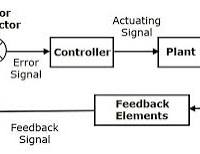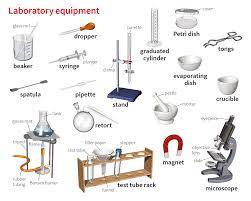The Power of Control Systems in Modern Technology
In today’s fast-paced world, control systems play a crucial role in managing and regulating various processes across different industries. From automated manufacturing plants to smart homes, control systems are the backbone of modern technology, enabling efficient operations and enhancing convenience for users.
At its core, a control system is a set of devices or software that manages, commands, directs, or regulates the behaviour of other devices or systems. By monitoring inputs and making real-time adjustments, control systems ensure that processes run smoothly and effectively.
One common example of a control system is the thermostat in your home. It senses the temperature in your living space and adjusts the heating or cooling system to maintain a comfortable environment. This simple yet effective use of control systems demonstrates their ability to streamline tasks and improve efficiency.
In industrial settings, control systems are essential for maintaining quality standards, increasing productivity, and ensuring safety. Automated control systems can monitor machinery performance, regulate production processes, and alert operators to any deviations or malfunctions. This level of automation not only improves efficiency but also reduces the risk of human error.
With the rise of smart technologies, control systems have become even more sophisticated and integrated. Smart home devices such as thermostats, lighting controls, security systems, and entertainment systems can be interconnected and controlled remotely through a centralised system. This level of connectivity offers users unprecedented convenience and flexibility in managing their living spaces.
Overall, control systems are instrumental in shaping the way we interact with technology on a daily basis. Whether it’s optimising industrial processes, enhancing home automation, or improving user experiences, control systems continue to drive innovation and efficiency across various sectors.
Six Essential Tips for Designing and Maintaining Effective Control Systems
- Understand the system requirements thoroughly before designing the control system.
- Select appropriate sensors and actuators based on system needs and constraints.
- Implement redundancy or fail-safe mechanisms to ensure system reliability.
- Regularly calibrate and maintain the control system components for optimal performance.
- Consider factors such as noise, disturbances, and non-linearities when designing the control algorithm.
- Test the control system extensively in simulation and real-world scenarios before deployment.
Understand the system requirements thoroughly before designing the control system.
To design an effective control system, it is crucial to thoroughly understand the system requirements beforehand. By gaining a comprehensive understanding of the specific needs, constraints, and objectives of the system, designers can tailor the control system to optimally meet these criteria. This proactive approach ensures that the control system is not only well-suited to the intended application but also capable of delivering efficient and reliable performance. Clear comprehension of system requirements forms the foundation for a successful control system design that aligns seamlessly with the desired outcomes.
Select appropriate sensors and actuators based on system needs and constraints.
When designing a control system, it is crucial to carefully select the right sensors and actuators that align with the specific needs and constraints of the system. Sensors act as the eyes and ears of the system, providing essential data on various parameters such as temperature, pressure, motion, and more. Actuators, on the other hand, are responsible for carrying out the desired actions based on the information received from sensors. By choosing appropriate sensors and actuators that are compatible with the system requirements, efficiency can be maximised, performance optimised, and potential issues mitigated effectively. This strategic selection process ensures that the control system operates seamlessly and achieves its intended objectives with precision.
Implement redundancy or fail-safe mechanisms to ensure system reliability.
Implementing redundancy or fail-safe mechanisms is crucial to ensuring the reliability of a control system. By having backup systems or safety measures in place, any potential failures or malfunctions can be mitigated, reducing the risk of downtime or critical errors. Redundancy allows for continued operation even if one component fails, maintaining system functionality and performance. Fail-safe mechanisms provide an added layer of protection by triggering predefined actions in the event of a failure, preventing catastrophic consequences and ensuring the safety and stability of the control system. Prioritising redundancy and fail-safe mechanisms is essential for maintaining operational continuity and safeguarding against unforeseen challenges.
Regularly calibrate and maintain the control system components for optimal performance.
Regularly calibrating and maintaining the control system components is essential to ensure optimal performance and efficiency. By conducting routine calibration checks, you can fine-tune the system to operate at its best, preventing inaccuracies and errors that may impact its functionality. Proper maintenance also helps prolong the lifespan of the components, reducing the risk of breakdowns and costly repairs. Ultimately, investing time and effort into the upkeep of control system components pays off in improved performance and reliability, ensuring smooth operations across various applications.
Consider factors such as noise, disturbances, and non-linearities when designing the control algorithm.
When designing a control algorithm, it is essential to consider factors such as noise, disturbances, and non-linearities. Noise can introduce uncertainty into the system, affecting the accuracy of measurements and control actions. Disturbances are external influences that can disrupt the system’s operation, requiring the control algorithm to adapt dynamically. Non-linearities in the system’s behaviour can complicate the control process, requiring sophisticated algorithms to account for these complexities. By addressing these factors during the design phase, engineers can develop robust control algorithms that effectively manage uncertainties and variations in real-world systems.
Test the control system extensively in simulation and real-world scenarios before deployment.
To ensure the effectiveness and reliability of a control system, it is essential to thoroughly test it in both simulation and real-world scenarios before deployment. Simulations allow for comprehensive evaluation of the system’s performance under various conditions, helping to identify potential issues and refine its functionality. Real-world testing provides valuable insights into how the control system interacts with its environment and users, uncovering any unforeseen challenges that may arise. By conducting extensive testing across different scenarios, developers can fine-tune the control system to deliver optimal results and enhance its overall performance when put into operation.



